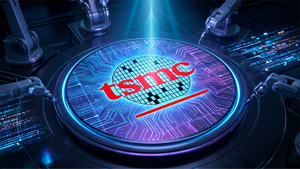Bristol Myers Squibb (NYSE: BMY) today announced that the company has withdrawn a supplemental biologics license application (sBLA) for Reblozyl® (luspatercept-aamt) for the treatment of anemia in adults with non-transfusion dependent (NTD) beta thalassemia. The Company could not appropriately address the U.S. Food and Drug Administration’s questions about the benefit-risk profile of Reblozyl in this patient population based on the current dataset from the Phase 2 BEYOND trial.
“While we will not pursue this indication in the U.S., we’re continuing to evaluate Reblozyl in a broad clinical development program to bring this important therapeutic option to more patients living with the burden of anemia,” said Noah Berkowitz, M.D., Ph.D., senior vice president, Hematology Development, Bristol Myers Squibb.
Reblozyl, a first-in-class therapeutic option, is currently approved in the United States, European Union and Canada to address transfusion-dependent anemia-associated beta thalassemia and lower-risk myelodysplastic syndromes.
About BEYOND
BEYOND (NCT03342404) is a Phase 2, double-blind, randomized, placebo-controlled, multicenter study to determine the efficacy and safety of luspatercept-aamt (ACE-536) versus placebo in adults with non-transfusion dependent beta thalassemia. The study is divided into the screening period, double-blind treatment period (DBTP) and post-treatment follow-up period (PTFP) and randomized 145 subjects at a 2:1 ratio of Reblozyl versus placebo. All patients were eligible to receive best supportive care, which included red blood cell transfusions; iron-chelating agents; use of antibiotic, antiviral, and antifungal therapy; and/or nutritional support, as needed. The primary endpoint of the study is the proportion of subjects who have an increase from baseline ≥1.0 g/dL in mean of hemoglobin values over a continuous 12-week interval from Week 13 to Week 24 of treatment in the absence of transfusions. Key secondary endpoints include mean change in non-transfusion dependent beta thalassemia-patient reported outcome (NTDT-PRO) Tiredness and Weakness (TW) domain score and baseline hemoglobin (Hb).
About Beta Thalassemia
Beta thalassemia is an inherited blood disorder caused by a genetic defect in hemoglobin. It is one of the most common autosomal recessive disorders, and the total annual incidence of symptomatic individuals is estimated at 1 in 100,000 people globally.1 While beta thalassemia remains a rare disease, its prevalence has increased in the United States by approximately 7.5% over the last 50 years.2 The disease is associated with ineffective erythropoiesis, which results in the production of fewer and less healthy red blood cells (RBCs), often leading to severe anemia—a condition that can be debilitating and can lead to other complications for patients—as well as other serious health issues.3 Treatment options for anemia associated with beta thalassemia are limited, consisting mainly of frequent RBC transfusions that have the potential to contribute to iron overload, which can cause serious complications such as organ damage.1 Non-transfusion dependent beta thalassemia is a term used to describe patients who do not require lifelong regular transfusions for survival, although they may experience a range of clinical complications and require occasional or even frequent transfusions, usually for defined periods of time.4
About Reblozyl®
Reblozyl, a first-in-class therapeutic option, promotes late-stage red blood cell maturation in animal models.1 Reblozyl is being developed and commercialized through a global collaboration with Merck following Merck’s acquisition of Acceleron Pharma, Inc. in November 2021. Reblozyl is currently approved in the U.S. for the treatment of:
- anemia in adult patients with beta thalassemia who require regular red blood cell transfusions, and
- anemia failing an erythropoiesis stimulating agent and requiring 2 or more red blood cell units over 8 weeks in adult patients with very low- to intermediate-risk myelodysplastic syndrome with ring sideroblasts (MDS-RS) or with myelodysplastic/myeloproliferative neoplasm with ring sideroblasts and thrombocytosis (MDS/MPN-RS-T).
Reblozyl is not indicated for use as a substitute for red blood cell transfusions in patients who require immediate correction of anemia.
Important Safety Information
WARNINGS AND PRECAUTIONS
Thrombosis/Thromboembolism
In adult patients with beta thalassemia, thromboembolic events (TEE) were reported in 8/223 (3.6%) REBLOZYL-treated patients. TEEs included deep vein thrombosis, pulmonary embolus, portal vein thrombosis, and ischemic stroke. Patients with known risk factors for thromboembolism (splenectomy or concomitant use of hormone replacement therapy) may be at further increased risk of thromboembolic conditions. Consider thromboprophylaxis in patients at increased risk of TEE. Monitor patients for signs and symptoms of thromboembolic events and institute treatment promptly.
Hypertension
Hypertension was reported in 10.7% (61/571) of REBLOZYL-treated patients. Across clinical studies, the incidence of Grade 3 to 4 hypertension ranged from 1.8% to 8.6%. In patients with beta thalassemia with normal baseline blood pressure, 13 (6.2%) patients developed systolic blood pressure (SBP) ≥130 mm Hg and 33 (16.6%) patients developed diastolic blood pressure (DBP) ≥80 mm Hg. In adult patients with MDS with normal baseline blood pressure, 26 (29.9%) patients developed SBP ≥130 mm Hg and 23 (16.4%) patients developed DBP ≥80 mm Hg. Monitor blood pressure prior to each administration. Manage new or exacerbations of preexisting hypertension using anti-hypertensive agents.
Embryo-Fetal Toxicity
REBLOZYL may cause fetal harm when administered to a pregnant woman. REBLOZYL caused increased post-implantation loss, decreased litter size, and an increased incidence of skeletal variations in pregnant rat and rabbit studies. Advise pregnant women of the potential risk to a fetus. Advise females of reproductive potential to use effective contraception during treatment and for at least 3 months after the final dose.
ADVERSE REACTIONS
Beta Thalassemia
- Serious adverse reactions occurred in 3.6% of patients on REBLOZYL. Serious adverse reactions occurring in 1% of patients included cerebrovascular accident and deep vein thrombosis. A fatal adverse reaction occurred in 1 patient treated with REBLOZYL who died due to an unconfirmed case of acute myeloid leukemia (AML).
- Most common adverse reactions (at least 10% for REBLOZYL and 1% more than placebo) were headache (26% vs 24%), bone pain (20% vs 8%), arthralgia (19% vs 12%), fatigue (14% vs 13%), cough (14% vs 11%), abdominal pain (14% vs 12%), diarrhea (12% vs 10%) and dizziness (11% vs 5%).
Myelodysplastic Syndromes
- Grade >3 (≥2%) adverse reactions included fatigue, hypertension, syncope and musculoskeletal pain. A fatal adverse reaction occurred in 5 (2.1%) patients.
- The most common (≥10%) adverse reactions included fatigue, musculoskeletal pain, dizziness, diarrhea, nausea, hypersensitivity reactions, hypertension, headache, upper respiratory tract infection, bronchitis, and urinary tract infection.
LACTATION
It is not known whether REBLOZYL is excreted into human milk or absorbed systemically after ingestion by a nursing infant. REBLOZYL was detected in milk of lactating rats. When a drug is present in animal milk, it is likely that the drug will be present in human milk. Because many drugs are excreted in human milk, and because of the unknown effects of REBLOZYL in infants, a decision should be made whether to discontinue nursing or to discontinue treatment. Because of the potential for serious adverse reactions in the breastfed child, breastfeeding is not recommended during treatment and for 3 months after the last dose.
Please see full Prescribing Information for REBLOZYL.
Bristol Myers Squibb: Creating a Better Future for People with Cancer
Bristol Myers Squibb is inspired by a single vision — transforming people’s lives through science. The goal of the company’s cancer research is to deliver medicines that offer each patient a better, healthier life and to make cure a possibility. Building on a legacy across a broad range of cancers that have changed survival expectations for many, Bristol Myers Squibb researchers are exploring new frontiers in personalized medicine, and through innovative digital platforms, are turning data into insights that sharpen their focus. Deep scientific expertise, cutting-edge capabilities and discovery platforms enable the company to look at cancer from every angle. Cancer can have a relentless grasp on many parts of a patient’s life, and Bristol Myers Squibb is committed to taking actions to address all aspects of care, from diagnosis to survivorship. Because as a leader in cancer care, Bristol Myers Squibb is working to empower all people with cancer to have a better future.
About Bristol Myers Squibb
Bristol Myers Squibb is a global biopharmaceutical company whose mission is to discover, develop and deliver innovative medicines that help patients prevail over serious diseases. For more information about Bristol Myers Squibb, visit us at BMS.com or follow us on LinkedIn, Twitter, YouTube, Facebook and Instagram.
Juno Therapeutics, Inc. is a wholly owned subsidiary of Bristol-Myers Squibb Company. In certain countries outside the U.S., due to local laws, Celgene and Juno Therapeutics are referred to as, Celgene, a Bristol Myers Squibb company and Juno Therapeutics, a Bristol Myers Squibb company.
Cautionary Statement Regarding Forward-Looking Statements
This press release contains “forward-looking statements” within the meaning of the Private Securities Litigation Reform Act of 1995 regarding, among other things, the research, development and commercialization of pharmaceutical products. All statements that are not statements of historical facts are, or may be deemed to be, forward-looking statements. Such forward-looking statements are based on current expectations and projections about our future financial results, goals, plans and objectives and involve inherent risks, assumptions and uncertainties, including internal or external factors that could delay, divert or change any of them in the next several years, that are difficult to predict, may be beyond our control and could cause our future financial results, goals, plans and objectives to differ materially from those expressed in, or implied by, the statements. These risks, assumptions, uncertainties and other factors include, among others, the possibility that Reblozyl (luspatercept-aamt) may not receive regulatory approval for the additional indication described in this release in the currently anticipated timeline or at all, that any marketing approvals, if granted, may have significant limitations on their use, and, if approved, whether such product candidate for such additional indication described in this release will be commercially successful. No forward-looking statement can be guaranteed. Forward-looking statements in this press release should be evaluated together with the many risks and uncertainties that affect Bristol Myers Squibb’s business and market, particularly those identified in the cautionary statement and risk factors discussion in Bristol Myers Squibb’s Annual Report on Form 10-K for the year ended December 31, 2021, as updated by our subsequent Quarterly Reports on Form 10-Q, Current Reports on Form 8-K and other filings with the Securities and Exchange Commission. The forward-looking statements included in this document are made only as of the date of this document and except as otherwise required by applicable law, Bristol Myers Squibb undertakes no obligation to publicly update or revise any forward-looking statement, whether as a result of new information, future events, changed circumstances or otherwise.
corporatefinancial-news
References:
- Galanello R, Origa R. Beta thalassemia. Orphanet Journal of Rare Diseases. 2010;5(11). Available at: https://ojrd.biomedcentral.com/articles/10.1186/1750-1172-5-11. Accessed February 2022.
- Kattamis, A., Forni, G. L., Aydinok, Y., Viprakasit, V. (2020). Changing patterns in the epidemiology of β-thalassemia. Available at: https://onlinelibrary.wiley.com/doi/full/10.1111/ejh.13512. Accessed February 2022.
- Rivella, S. (2013). Ineffective erythropoiesis and thalassemias. Available at: https://www.ncbi.nlm.nih.gov/pmc/articles/PMC3703923/pdf/nihms-490109.pdf. Accessed February 2022.
- Musallam, K. M., Rivella, S., Vichinsky, E., & Rachmilewitz, E. A. (2013). Non-transfusion-dependent thalassemias. Haematologica, 98(6), 833–844. https://doi.org/10.3324/haematol.2012.066845. Accessed February 2022.
View source version on businesswire.com: https://www.businesswire.com/news/home/20220603005473/en/
Contacts
BMS:
Media Inquiries: media@bms.com
Investors: investor.relations@bms.com




